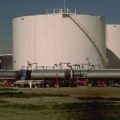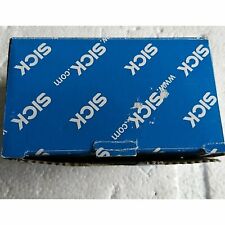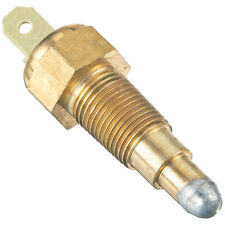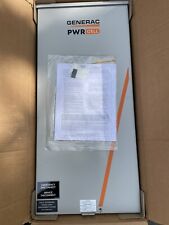Although Malin and Edgett favor water as the sedimentary suspect, they also offer an alternative model that involves changes in atmospheric pressure on early Mars. They suggest that periods of relatively high atmospheric pressure–caused by fluctuations in the amount of solid carbon dioxide on the planet’s surface–could have increased the atmosphere’s ability to carry dust produced by heavy cratering.
To confuse matters, the Scienceresearchers don’t know where the original sediments came from, or how they were transported to their final resting places, since there are no traces of gullies or streams or other channels associated with the outcrops. They think that erosion may have wiped out both the source of the sediments and their travel routes.
In some cases, sedimentary rock has eroded out of the crater in which it formed, also vanishing without a geologic clue.
To Malin, the history of martian geology looks like a jigsaw puzzle.
“In the center of the puzzle, we have these layered rocks, which are good evidence of an extremely dynamic environment. On either side of this well-developed puzzle piece, we have mysteries.”
In any case, Mars’ sedimentary rocks suggest a very active early history for the planet.
“This makes Mars more complicated and more exciting. This record is going to tell us a lot about what early Mars was like, and maybe the early Earth as well, since we don’t have a lot of rocks on our own planet from this time period,” said Edgett.
–>
4 December 2000
Rocks On Mars Suggest Ancient Lakes
by Kate Melville
 Layered geologic outcrops on Mars, described in today’s issue of the journal Science–may be composed of sedimentary rock that dates from the earliest span of martian history, between 4.3. and 3.5 billion years ago.
Layered geologic outcrops on Mars, described in today’s issue of the journal Science–may be composed of sedimentary rock that dates from the earliest span of martian history, between 4.3. and 3.5 billion years ago.
Images of these sedimentary rock exposures, captured by the Mars Orbiter Camera (MOC), suggest that parts of ancient Mars may have resembled a land of lakes, and that the geology of early Mars was much more dynamic than previously suspected.
If life existed on Mars during this time period, researchers believe that the fossil remnants of that past life may be sandwiched within the sedimentary rock layers, just as they are on Earth.
The martian outcrops, in some cases a few kilometers thick, appear to be made of fine-grained materials deposited in horizontal layers, the hallmark of sedimentary rock. These outcrops are found inside craters, between craters, and within chasms, said Michael C. Malin and Kenneth S. Edgett of Malin Space Science Systems in San Diego, California.
The Science researchers identified three main outcrop types from the MOC images: layered units, massive units, and thin mesa units.
Layered units, as their name suggests, consist of relatively thin rock beds–some only a few meters thick–stacked on top of one another in distinct groups. Massive units appear as one bulky rock layer with no clearly defined horizontal bedding. In a few cases, these types appear together, with the massive unit always perched on top of the bedded unit like a thick, indistinct coat of frosting on a layer cake.
Thin mesa units, with surfaces ranging from smooth to pitted to ridged and grooved, are almost always found on top of eroded massive or layered sedimentary rock.
While sediments can be deposited in a variety of ways–including wind, water, volcanic activity, and even cosmic impact–the prevalence of the martian sedimentary outcrops within basin-like features suggests that they were deposited by water, perhaps in lakes that formed within the craters and chasms, said Malin and Edgett.
Under this scenario, sediments may have been transported into the lakes in regular, swift pulses, building up thin layer units. Massive units may have been deposited when the lake became stagnant or deep enough to cause sediments to sift down through the water over longer intervals.
“Some of the MOC images of these outcrops show hundreds and hundreds of identically thick layers, which is almost impossible to have without water,” said Malin.
The sedimentary units show no telltale signs of wind deposition, and the researchers concluded that explosive volcanic eruptions and impact cratering probably could not have produced enough sediment to create the large-scale and geographically widespread outcrops seen on the martian surface.
Although Malin and Edgett favor water as the sedimentary suspect, they also offer an alternative model that involves changes in atmospheric pressure on early Mars. They suggest that periods of relatively high atmospheric pressure–caused by fluctuations in the amount of solid carbon dioxide on the planet’s surface–could have increased the atmosphere’s ability to carry dust produced by heavy cratering.
To confuse matters, the Scienceresearchers don’t know where the original sediments came from, or how they were transported to their final resting places, since there are no traces of gullies or streams or other channels associated with the outcrops. They think that erosion may have wiped out both the source of the sediments and their travel routes.
In some cases, sedimentary rock has eroded out of the crater in which it formed, also vanishing without a geologic clue.
To Malin, the history of martian geology looks like a jigsaw puzzle.
“In the center of the puzzle, we have these layered rocks, which are good evidence of an extremely dynamic environment. On either side of this well-developed puzzle piece, we have mysteries.”
In any case, Mars’ sedimentary rocks suggest a very active early history for the planet.
“This makes Mars more complicated and more exciting. This record is going to tell us a lot about what early Mars was like, and maybe the early Earth as well, since we don’t have a lot of rocks on our own planet from this time period,” said Edgett.


















Comments are closed.